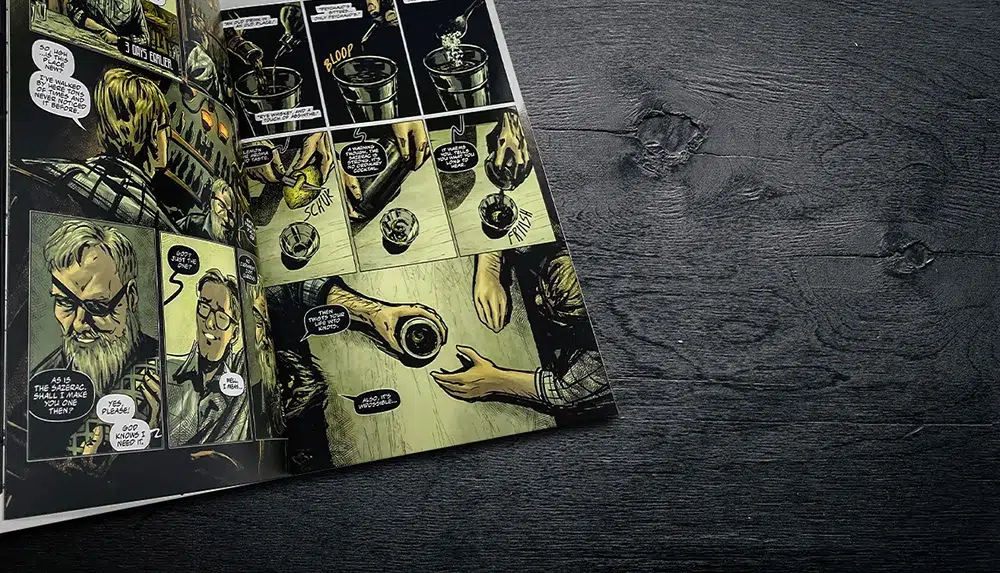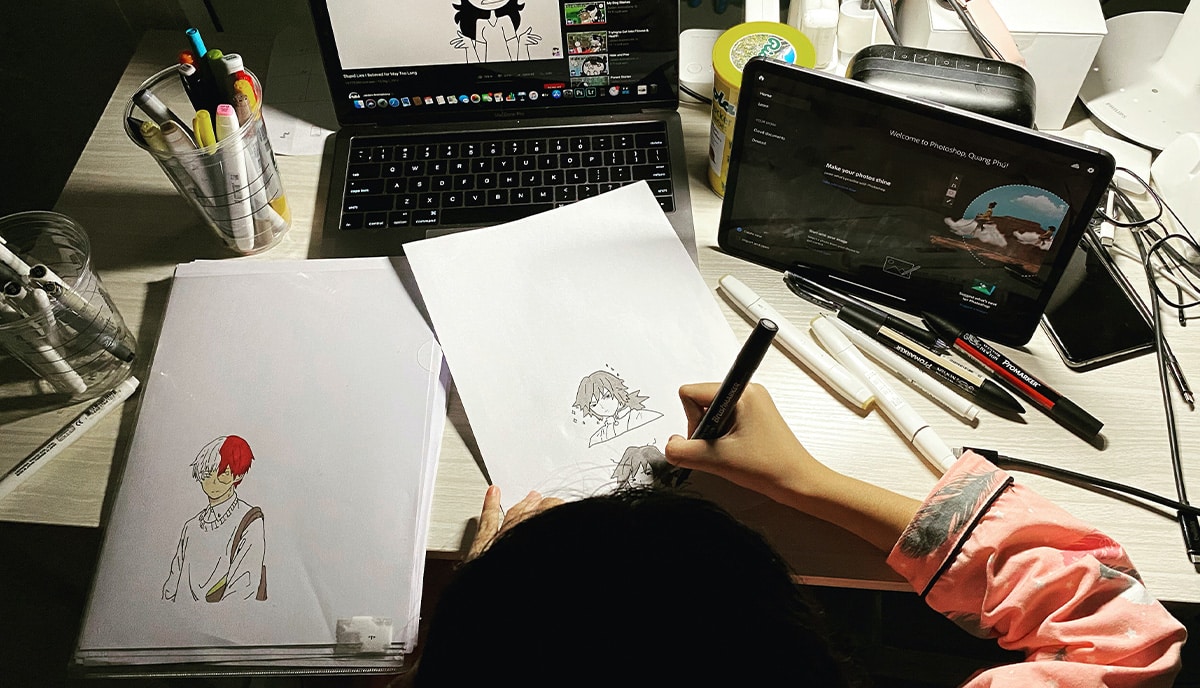At QinPrinting, we work daily with successful independent comic book creators to print their comics for self-publishing. But what about if you're only just getting started? What's the best way to learn? That's what we'll teach you in this post.
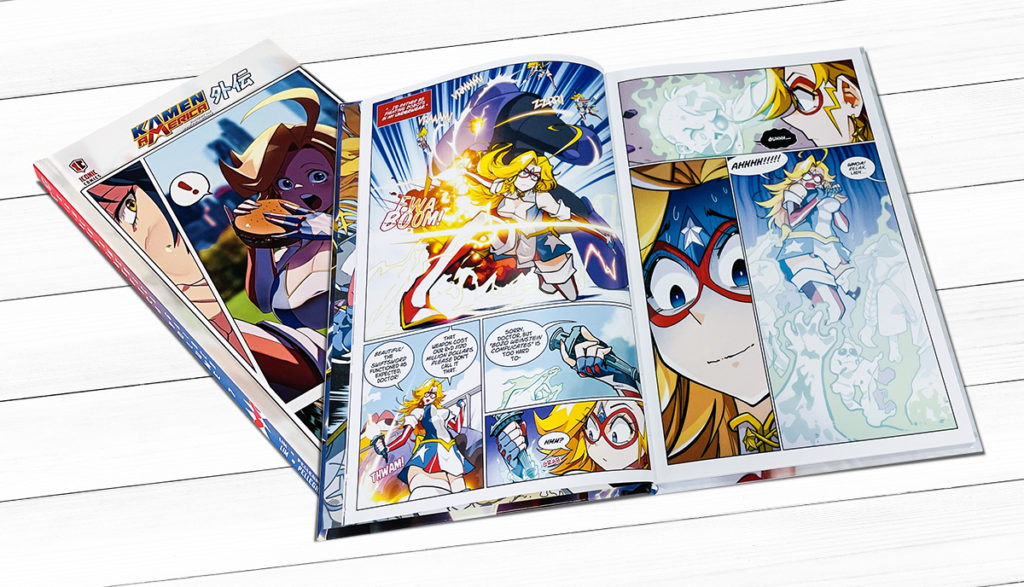
Comic books have captivated readers of all ages since they published the very first one way back in 1837. Comics are a fascinating medium because of their visual storytelling, original characters, and the potential for deep, multisensory storytelling. Making your own comic book is simpler than ever in this digital age.
No longer do you need to have professional art training to get started with comic book creation. There are several accessible internet resources available to help you experiment and learn the ropes before you launch into making your own comics to self-publish and sell. In this post, the first thing we'll do is look at some of the best resources available online for learning how to make your own comic book.
But remember that these are just to get you started — to introduce you to the fundamentals and core principles of comic book design. Once you feel more confident, use professional software (we recommend Adobe Illustrator) to prepare your artwork for printing. So, also in this post, once we've walked you through the basics of design and artwork preparation, we'll show you how QinPrinting can help you print a professional comic to self-publish and sell.
First up, we've scoured the web and talked to several comic creators to bring you our pick of the easy-to-get-started online comic book resources. We've had a lot of fun with these and we're confident you will, too! Use these freely to get a feel for the potential of the genre and to experiment with a range of styles and approaches. By the time you've made a few simple comics with these introductory tools, you should have a good feeling for whether you think it's something in which you'd like to invest and take to a more professional level. Let's get started!
MakeBeliefsComix: flex your imagination
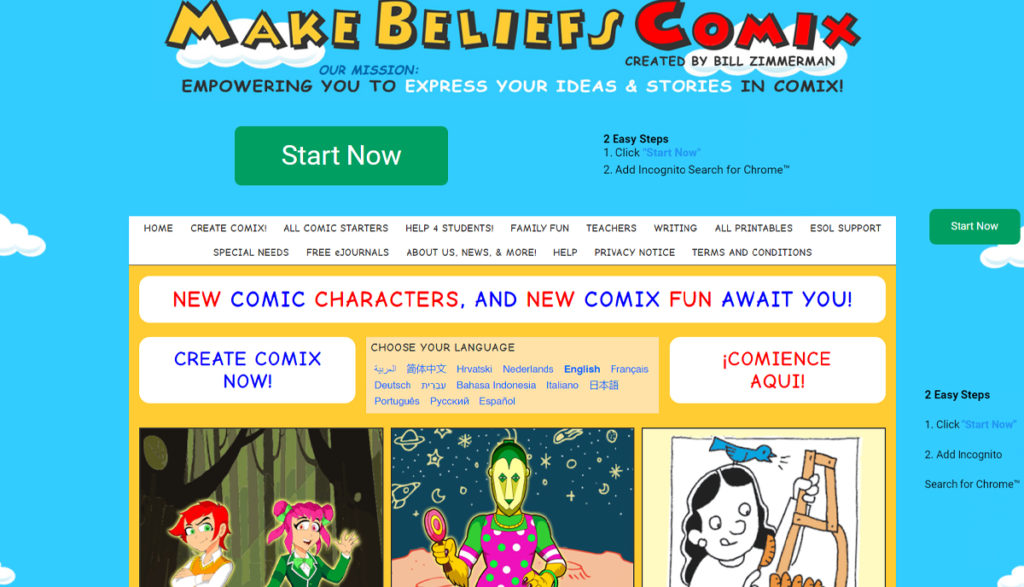
MakeBeliefsComix.com is a terrific resource for making comic strips, with options for both kids and adults. You have the choice of using any of the 25 available characters to populate a comic strip of two, three, or four panels. This website is great for those who want to express themselves through comics but don't want to spend a lot of time focusing on the technical details because of the pre-set settings that make it easy to create a comic strip quickly.
MakeBeliefsComix's emphasis on encouraging imagination and discovery is one of its many strengths. The site's founder, Bill Zimmerman, claims that users can exercise their imaginations and find new opportunities by interacting with a cast of characters who can express a wide range of emotions and thoughts. If you just want to make a short comic strip that says something meaningful, this is a great website to use.
The limited number of frames shouldn't discourage you. Creating a complete comic book with potentially hundreds of frames is a monumental task. This easy and fun tool will still help you learn vital aspects of how to structure and order your frames to tell a story, express character, and show emotions: all essential aspects of the art.
Pixton: a hub for the creative process

Pixton is a well-known comic platform that encourages kids to express their individuality via integrating visual art and written expression. But it's great for adults, too! Users of all artistic abilities can use this drag-and-drop comic maker to make their own comics. You may encourage a spirit of cooperation and new ideas by joining the Pixton community and sharing your own comics with others.
Pixton stands out for its flexible personalization options. To populate your comic strip, select elements from an extensive database. Users of Pixton can also change the characters' positions, facial expressions, and other characteristics. This personalization allows your comic strip to express your individual artistic vision accurately. Pixton also lets you keep your work in progress, so you can create content when the time is right for you.
What you won't learn with this resource is any drawing skills. You're using, rearranging, and altering a set of pre-made components. But that's fine, because it gives you a ton of experience in learning how to put comic book elements together in meaningful ways, work on a layout, and develop a story-flow that will keep your readers engaged. At the time of writing, an individual subscription is $9.99 a month or $49 annually. You can cancel anytime.
Bitstrips: not just putting yourself in cartoons!
Bitstrips is a web app for Android devices that lets you draw cartoon caricatures of yourself. Bitstrips allow you to create avatars with a wide range of personalization, including hairstyles, cosmetics, and clothing. To guarantee that your cartoon avatar really reflects you, the site provides a wealth of customization possibilities. But it's not just about making personalized avatars.
Bitstrips' functionality extends beyond the simple ability to generate animated representations of oneself to include a narrative framework. You can write your own original comic books using the characters you've designed. Bitstrips is a great place to express your imagination since it combines aesthetic customization with the power of storytelling.
Of course, this will not give you a pro-level comic book by any means. But we still think it's a valuable resource if you want a super — and we must admit, great fun! — introduction into the world of comic design.

Strip Designer: a flexible tool that teaches design
Strip Designer is a flexible media-making program that may achieve many educational goals in many fields. Using this website is a fun and simple way to write your own comic book. Although Strip Designer lacks comprehensive personalization possibilities, it makes up for it with its novel feature, movable frames.
You can change the proportions of each frame in your comic strip with the help of Strip Designer. With this function, you can design engaging and modern story layouts. To further facilitate the maintenance of continuity and efficiency throughout the comic book-making process, Strip Designer features a personal library where you can save and reuse your customized graphics.
So again, this tool will not teach you about drawing, but it allows you to experiment in meaningful ways with the relationships between frames, gutters, and frame series, which is an essential skill to master so that you can manage the story flow, pacing, and emotional impact of your comic book.

Storyboard That: a simple, flexible method of storytelling

Storyboard That is a fun and easy-to-use website where you can tell stories with unique characters and settings. Storyboard That may not have a ton of bells and whistles, sure, but it's flexible enough to be useful for beginners working out the basics of how to put a story together frame by frame. The website's user-friendly interface makes it simple for visitors to build their own visual stories by dragging and dropping pre-made characters, props, and settings.
The ability to add simple but flexible storytelling tools is one of Storyboard's distinctive characteristics. Users can increase the narrative depth of their comics by including speech and subtitles on the panels. Because of its ease of use and wealth of instructional materials, Storyboard That is a top pick for teachers who want to get their students involved in imaginative storytelling activities.
We think it's also an excellent introduction for anyone wanting to get to grips with the fundamental principles of storyboarding — a vital phase in any comic book development. There's a free version with limited access, and there's the individual monthly subscription at $9.99. At the time of writing, you can get the first month for just a dollar.
Comic Life 3: working toward a pro level
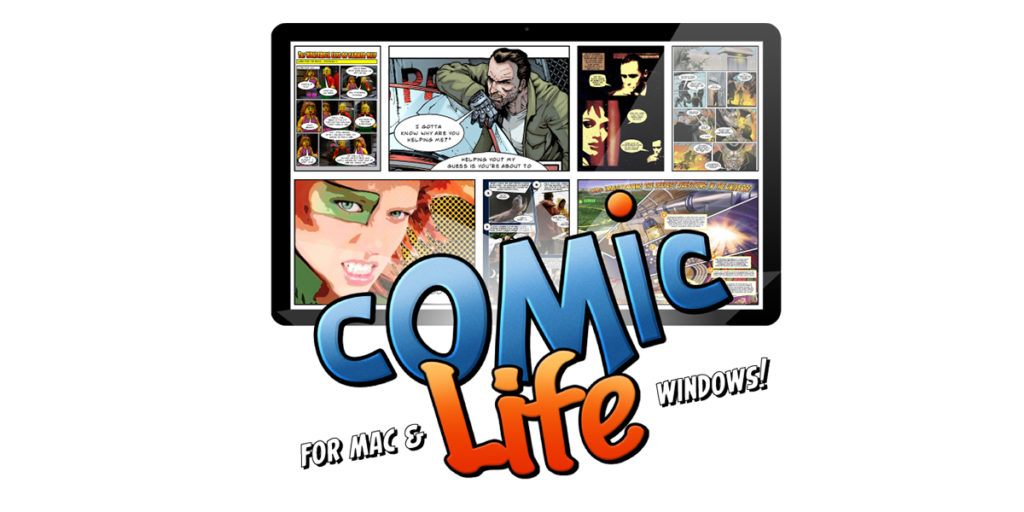
Students of comic book design can apply what they learn through visual storytelling with the help of Comic Life 3, a near-professional creative tool. This program makes it simple for anyone to draw and color their own comics. Create visually appealing and interesting comic strips with no limit on length, with a variety of tools and pre-made layouts available in Comic Life 3.
We love this app. The intuitive design of Comic Life 3's UI (user interface) is a major selling point. To make creating comic strips easy and fun for its users, the software includes rules and recommendations which are great teaching tool when you're just getting started but you can choose to ignore if you're confident in your creative direction. Comic Life 3 provides a flexible and user-friendly environment in which artists of all skill levels can tell their stories visually.
It's several steps above the previous resources we've looked at so far and gives genuine opportunity to go deep into learning all the skills you'll need to make polished, professional comic book design. And we think it's reasonably priced at just a little under $40 for a lifetime license. Download it to your Windows or Mac device, and get started!
What are the expenses involved in self-publishing a comic book?
If you have a knack for storytelling and illustration, and you also enjoy comic books, you may wish you could draw comics for a living. Well, there's no excuse not to design, make, print, and sell your own comic books considering the incredible digital tools accessible today for learning the ropes and the cost-effective options on subscription-based professional tools like Adobe Illustrator and InDesign. You also have access to the worldwide market and prospects for global distribution. You can get detailed information about how much it costs to print a comic book and self-publish it here.

Process of making a comic book
Several phases go into making and releasing a comic book, and each one has its own associated expenses. Obviously, much is down to your skills, willingness to learn, and your available budget. You can work at the “economy” end of the market or carve a niche in the higher professional zone. Allow us to elaborate on each of these points:
1. The creative process
Creating the story and artwork for a comic book is the first order of business. As a cartoonist, your mind is probably brimming with concepts for comic book characters, plots, and illustrations. You can use pen and paper to write the story and draw the illustrations, or you can use digital design programs. Now, all you're out of pocket for is probably your time and energy.
In terms of the tools and equipment you need to set up your first studio — even if that's your kitchen table! — you could spend as little as $150 and as much as several thousand bucks, depending on the heights of your ambition. But you can get started with only a minor investment. Once you see a minor success, you can choose to move up to the next level.
2. Structure and design
You should spend money on design and layout if you want your comic book to be successful in the marketplace. You can manage this on your own if you have the abilities and you're prepared to invest in the right software. But if you're not trained in design and you want a polished and aesthetically pleasing result, it's best to hire a professional designer to help you. Depending on the intricacy and length of your comic book, the design and layout costs will vary.
So, depending on whether you aim for handing your drawings — digital or traditional — to a designer along with your rough storyboard to let them put it all together in a professional, print-ready format or if you do most of the work yourself and use a designer only as a final stage consultant, you could spend as little as a couple hundred bucks on design services or up into the several thousands. For your first comic, unless you have money to burn, we suggest you reach a sensible compromise.
If you choose to work with QinPrinting, we can help you by providing free design and layout templates, checking your files for you, and providing proofs and samples before you commit to printing. If you need advice at any stage on your journey, you can contact us by telephone, email, Skype, the contact form or our online chat and we'll do our best to help.
3. Printing
The printing process is an essential part of making a comic book. You can print your comic book on your home printer just to get an idea of what it will look like, or you could take it to a digital print store if you need a super-budget version; but if you want to sell it and have it look professional, it's best to use an offset printer. Size, layout, paper quality, and quantity are all variables that might affect how much it costs to print your comic book. But it's a known fact that the range of options is greater with an offset printer and the savings on production are potentially much higher.
4. Sales and promotion
The next steps after getting your comic book printed are distribution and promotion. Shipping, packaging, and advertising costs all add up at this point. Your graphic novel's distribution options include the web stores such as Amazon and ComiXology, brick-and-mortar shops, and shows and conventions. Attending comic book conventions and social media ads are just two examples of the many promotional activities that can increase exposure and, ultimately, revenue.
5. Extra expenses
There are some other expenses to think about besides the major stages of comic book creation. If you want to sell your comic book in brick-and-mortar stores or through library systems, you may need to register it for an ISBN (International Standard Book Number). Registration fees are different for each country, depending on the quantity of ISBNs needed. Having your comic edited by a professional can enhance its quality. The story, dialogue, and art can all be improved with the input of a professional editor. What you'll pay for expert editing depends on how much work needs to be done and how much the editor charges per hour.
Advice for printing and self-publishing comic books on a budget
Self-publishing a comic book might be expensive, but there are ways to reduce expenses without sacrificing quality. Here are some suggestions:
By investigating and contrasting various printing alternatives, you can find the best balance between cost and quality. Think about the quantity of prints you need, the paper types you can use, and the printing technology available.
Select reasonably priced paper sources that don't sacrifice quality. Talk with us about cost-effective options for paper types, weights, and finishes, both for the interior pages and the cover.
Carefully think about the final trim size of your comic book. Reducing the trim size can lower the cost of printing, but presentation and readability may suffer.
You need to plan printing runs intelligently. Buying in bulk can help you save money on each individual product, but only if you have an accurate idea of how many copies will actually sell.
Join forces with other authors or publishers to cut down on production and distribution costs. Sharing the costs of a project and the benefits of having others chip in can add up to significant savings.
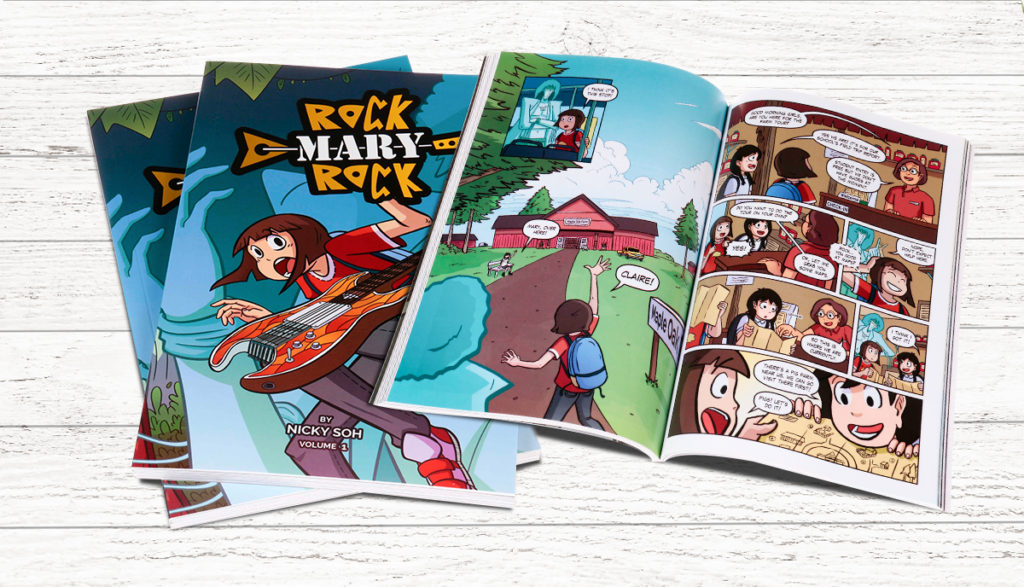
Which is better for commercial comic book printing: offset or digital printing?
The choice between offset printing and digital printing is important for comic book creators and publishers to make. You already know that we are an offset printing and packaging service and, yes, we'd like your business. But we also genuinely care about you and your product. We won't try to persuade you to work with us if we think your particular circumstances suggest another option might be better for you. To do so would be counterproductive because you'd be unhappy and it would soil our hard-earned reputation.
So, let's be 100% honest. There are pros and cons to both approaches, and while making the right choice will have a significant impact on your comic book's success, it's a decision you need to make for yourself. Much depends on your aims, your starting budget, and your market.
Here, we'll compare and contrast offset versus digital printing and talk about which method is better suited for mass-market comic book manufacturing. We'll get into the specifics of each printing method, including the technical issues, financial factors, color reproduction, paper choices, and unique procedures. At the end, you'll know exactly which technique is ideal for your high-quality comic book printing jobs.
The basics of offset printing
The publishing industry has long relied on the tried-and-true printing technology of offset printing, also called offset lithography. Using metal plates, ink, and rubber cylinders, a three-step technique is used to transfer the image to paper.
Each color or sheet used in offset printing requires its own metal plate, which is engraved in advance. They mount the metal plates with engraved images onto a revolving cylinder called the “plate cylinder.” The plate's oily or watery regions show where printing is possible.
In order to transfer the inked image from the metal cylinder to the rubber roll and ultimately onto the impression cylinder, which bears the paper, the metal cylinder rolls against another cylinder known as the “rubber cylinder.” The rubber cylinder and printing plate transport ink from the plate to the paper.
Offset printing for comic books: pros and cons
Offset printing has many benefits for the mass production of comic books.
- Offset printing does a fantastic job of reproducing colors, making it a superb choice for comic books with detailed illustrations and vivid backgrounds. It uses premixed inks whose color accuracy is maintained through printing, drying, and coating.
- Offset printing is typically less expensive than digital printing if you plan to publish a significant quantity of comic books. After the initial setup is finished, the cost per unit drops dramatically, making it a good option for mass production runs.
- Offset printing gives you additional options for the paper you use, so you can choose the type of paper that best suits your project. Offset printing allows for a wide range of paper choices, from thicker stocks to specialty finishes, all of which can improve your comic book's visual presentation and durability.
A few potential drawbacks of offset printing should be considered, however.
- Offset printing requires more time for setup than digital printing. Since each sheet needs its own plate, the entire process takes more time. This may not be the best choice for printing technology for your comic book if you are working under a tight deadline.
- Offset printing may not be the best option if you need to print a few copies because of the higher setup costs involved. For low-volume printing jobs, digital printing may be preferable because of its lower setup costs.
The value of digital printing
Digital printing is a newer printing technique that allows for shorter turnaround times and higher customization options for smaller print runs. It does away with plates and laborious setup procedures by immediately transferring the image from a digital file to the printing surface. Digital printing makes use of electrostatically charged drums or rollers. Toner is a powdered ink that is imparted to the paper using heat and pressure. After they have cured the toner in a separate unit, the printer is ready to produce a high-quality printout.
Comic Books and digital printing: pros and cons
For mass-market comic book printing, digital printing has a few potential benefits:
- Compared to offset printing, the turnaround time for digital printing is far shorter. Since there aren't any intricate setup procedures, manufacturing time is reduced, making it ideal for time-sensitive campaigns or projects.
- If you only need a few comic books printed — say, fewer than 100 copies — digital printing will save you money compared to offset printing. Self-publishers just starting out in the comic book business may find this method attractive because of the lack of initial setup costs.
- The color reproduction that digital presses use is more limited and less accurate. But digital printing may be adequate for mostly black-and-white comic book printing requirements.
However, there are some constraints to think about when using digital printing:
- Comic books that rely significantly on color branding or that need accurate color reproduction throughout for creative purposes will benefit from being printed using offset printing.
- Print service providers usually don't offer digital printing for specialty papers or unusual paper weights and finishes. Offset printing may be your only choice if you need your comic book printed on thicker stocks or specialized papers.
How to choose the best comic book printing technique
So, in summary, these are the things to keep in mind when you weigh the pros and cons of offset printing vs. digital printing for your next commercial comic book run:
- Offset printing is the most cost-effective method if over 100 copies of your comic book must be printed. Digital printing can be more cost-effective than offset printing when printing in smaller numbers because plate setup is not required.
- If the success of your comic book's branding or the faithful reproduction of your artwork depends on the colors used, offset printing is the way to go. The premixed inks used in offset printing ensure a high level of color accuracy and consistency.
- Digital printing is the best choice if you need your printing job completed quickly because of a pressing deadline. Because of how easy it is to set up, printing and shipping times are reduced.
- Offset printing offers extra flexibility if you need thicker paper or a unique coating. Digital printing, however, is a viable option if regular paper weights are used.
- Offset printing is your best bet if you want to add extra processes like foil stamping, embossing, or varnishing on your comic book. These methods are only possible with offset printing.
Let's talk!
There has never been a better time to make your own comic book, given the abundance of resources available online. These websites, which range from straightforward comic strip makers to flexible platforms that merge art and storytelling, provide users with a voice and an outlet through the creation of visually arresting narratives. These sites are impressive for emerging comic book artists of all skill levels because of their intuitive designs and adaptability to individual needs. The world of digital comic book production is waiting for you, so jump in and let your creativity run wild. The potential is enormous.
While it's wonderful to publish your own comic book, you should know the financial commitment it requires. There are costs for everything, from conceptualization and writing through design, layout, printing, and marketing. But bringing your comic book to life doesn't have to break the bank if you plan and think creatively about your budget. Keep in mind that the time and effort spent on creating a professional comic book can be part of growing a lucrative self-publishing business, although no-one can claim to guarantee your success. That's down to you, and maybe a bit of luck.
At QinPrinting, we've been printing beautiful, professional comics for self-publishing comic book creators — both writers and artists—for decades. When you're ready to go to print, talk to us. We're a friendly, expert team with bucket loads of experience creating world-class comics. We'd love to help you make your first comic a great success.







